With the boom of the internet and increasing number of search engine users, it is evident that most of the patients are hunting online for medical information and prefers to research on Google regarding their medical problems.

According to a recent report from Google, it has mentioned that more than 77% of patients research about hospitals on search engines before visiting the hospitals.
This is the tremendous opportunity for hospitals and healthcare industries to set up a web strategy and rank in search engines for their focus keywords. Hospitals are leaving a ton of money on the table by not leveraging or investing in Digital Marketing and SEO.
In case if you haven’t developed a website to generate brand awareness and conversions, this is the time for you to start. In this post, I will show how to do SEO audit on your existing hospital website.
Before diving into the nitty-gritty of how to do an SEO audit for your hospital’s website, it’s important to understand what an SEO audit is.
What is SEO Audit?
SEO audit is a way to evaluate your website performance in several key areas. It is ideal to do the audit before you start working on improving search engine optimization activities so that you will know what work needs to be done and track the results accordingly.
That means you are not just doing general tactics, but doing those tactics which are specific to your website uniqueness to rank higher in search engines. Doing general SEO tactics without evaluating or auditing the site is a waste of time and energy.
A proper SEO audit will include several key areas of your website including on-site optimization, off-site optimization, social metrics, competition analysis and a promotional analysis.
Why should you conduct SEO Audit in the first place?
There are many reasons for you to conduct an SEO audit for your hospital website. The most effective goal is to know the reason for a decrease in your organic traffic and what you can do to bring the numbers back up.
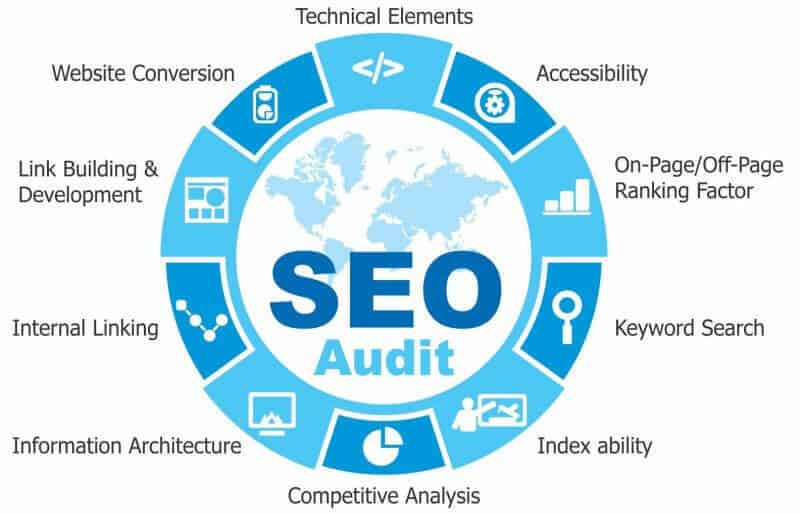
Another reason to do is to get ahead of your competitors in SERPs. SEO audit will help you do that.
You need to know how to do SEO audit even if you hire somebody else to do SEO. It will help you to check the progress of SEO work that is being done.
How often should you conduct SEO Audit on your Hospital’s website?
Now that you know what SEO audit is and why you should conduct one, you may be thinking how often should you do it.
It’s always better to have a routine and conduct an audit. I recommend you to do the audit at least once a month.
After the audit is completed, you will know the strengths and weaknesses of your website and where to focus more on increasing search engine rankings and performance of your site. You will have a complete roadmap for your upcoming tactics.
How to do SEO Audit on your hospital’s website?
Hospital or healthcare SEO audit process follows all the basics and regular SEO audit steps.
There are different ways you can perform the audit.
- Method – 1: Do it manually by yourself
- Method – 2: Do it using an SEO audit tool
- Method – 3: Hire an expert to do it for you
SEO Audit for Hospital Website
To get the quick details about your SEO performance, just enter the website URL in one of the SEO audit tools like Screaming Frog or SEOmator.
Screaming Frog is a freemium tool while SEOmator is a paid tool (With a free trial). I show you how to do it using both of these tools.
There are several factors which impact your search engine ranking. You need to check all these factors to complete a successful SEO audit. I have divided all the factors into four different sections so that it will be easy to track different areas of SEO.
On-page SEO Audit
On-page SEO is a practice of optimizing website pages. It refers to content and HTML source code on the page. There are several on-page SEO factors which will affect how your web page will rank for a particular keyword on SERPs.
Checklist for On-page SEO audit: You must check all the factors listed below to get the on-page SEO done right.
HTML Tags: After your website is crawled in the SEOmator or Screaming frog, open the project to check H1 tags, title tags, and description tags. See if there are any missing or duplicate tags and fix them.
Meta Titles: Check whether the titles are unique on each page. Title length should be of 55-65 characters. Your title tag must contain focus keywords. In many cases, meta titles and H1 tags are one and same. We can’t have more than one H1 tag on a single page. Check whether there are any missing titles or H1 tags using screaming frog and fix them.
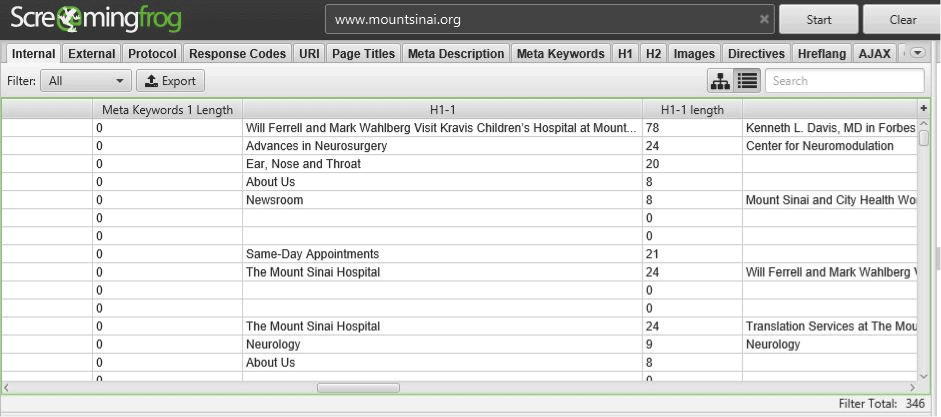
Meta descriptions: Meta description tag for all your pages must be around 160 characters. Your meta description should contain focus keywords for that page. You can again take screaming frogs help to check whether there are any pages without meta description.
URL Structure: All the URLs of your web pages should be SEO and user-friendly. Ideal URL length is around 250 characters without including the domain name.
Canonical URLs: Canonicalization is telling to search engines about which version of a page is shown to users when duplicate content exists. Following is one of many examples.
- www.example.com
- http://Example.com
- https://www.example.com
- www.example.com/index.html
Search engines see all the above URLs as four different pages. You have to tell search engines which version of the page to be shown by adding relevant rel=”canonical” tags.

Optimized Images: Search engines cannot read images and will slow down the pages if there are too many images on a web page. To counter the situation, you can compress the images to minimize size and add image ‘alt tags’ that include your focus keywords. Adding ‘alt tags’ will let search engines know what your image about is.
No-follow links: Your website should link to other sites while citing to a resource. It’s perfectly fine to link relevant resources, but ensure that most of those links are No-follow links if you don’t trust those websites. Rel=”nofollow” attribute is the way to tell search engines that you do not endorse those links or pass your link juice to them.
Pagespeed or load time: Both search engines and visitors hate web pages that takes so much time to load.
Users wouldn’t appreciate waiting for a long time to grab the information about how good your medical services are. Therefore, it is vital to decrease the loading time for your web pages. There are many online tools available to check your web page loading time like Pingdom and Google PageSpeed Insights.
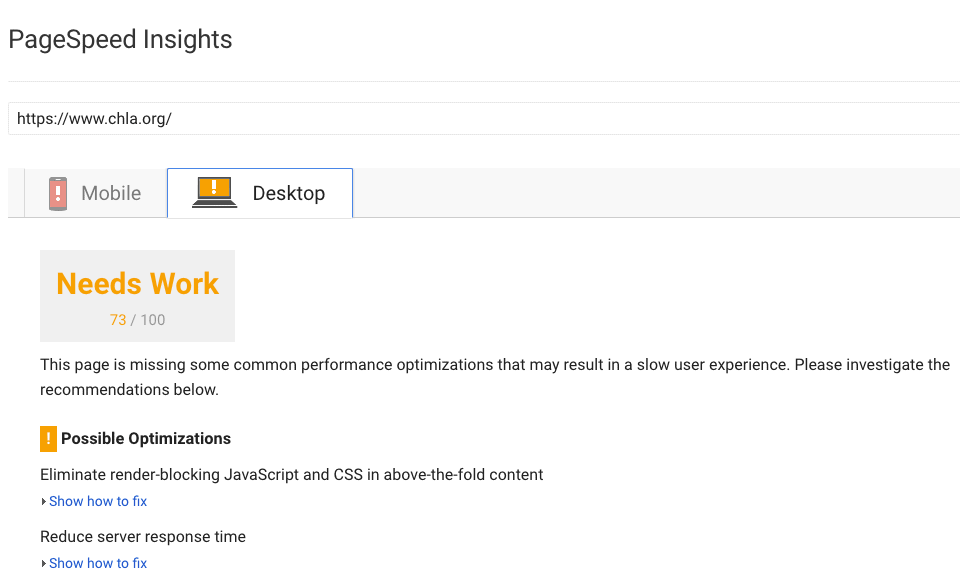
Ensure that loading speed is less than 3 seconds to rank higher on SERPs. Ensure that you have enabled page caching to speed up the loading time and optimized all the images and videos on the page.
Content delivery network or CDN will also help in decreasing the website loading time. There are many free and paid CDNs like Amazon CloudFront, MaxCDN, and Cloudflare which will do the work.
Consistent look and feel: Effortless to follow navigation and clear call to actions will help users to stay for a long time on the website which will result in low bounce rate.
Thin content pages: It’s essential to have a right amount of content on your webpage to optimize it for SEO. You need to have minimum 250-300 words on every page that you want to rank.
You can use Screaming Frog to test out how many words do your pages contain and find out those pages which have less than 300 words and optimize them by adding content.
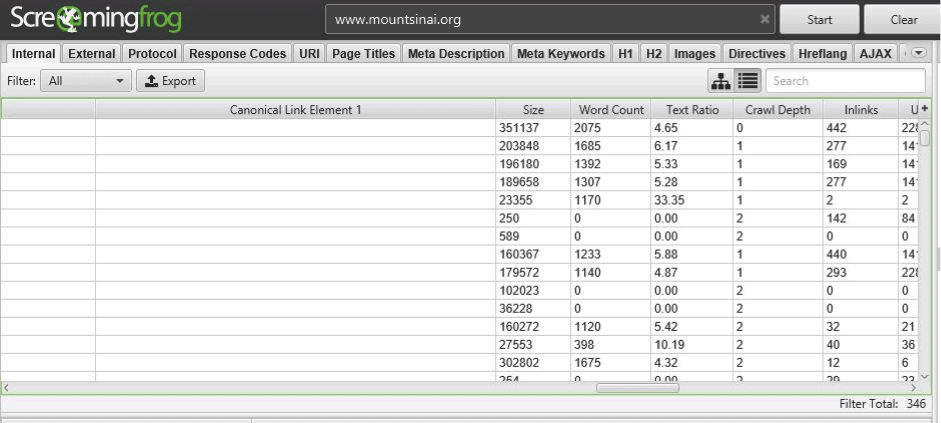
Off-Page SEO Audit
Off-page SEO is anything that occurs off of your website that helps your search engine ranking. It plays a vital role in ranking your web pages in SERPs. Most of the off-site SEO is about doing quality link building on relevant websites.
Checklist for Off-page SEO audit
Link Building Analysis: Virtually all of the off-site SEO depends on link building, which means links pointing to your website. First, you need to check how many incoming links your site has and determine the quality of those links.
You can do this using Open site explorer by Moz:

Link Building: Based on the link building analysis you perform using different tools, you will get a bright idea of what kind of websites are linking to you. You can reach out more such similar sites to get backlinks. Focus on building quality of links rather than quantity.
Unique Referring Domains: Check the number of unique referring domains your website have. If you have more than one link from a single site, then all those links come under one unique referring domain.
Domain Authority: Domain authority will tell you how likely a domain will rank in search engines.
Do not confuse domain authority with page authority. Domain authority takes all your web pages into account while page authority tells you the authority of one individual page of a website.
Use Moz’s open site explorer to check DA on your website as well as others. This can be helpful when you are doing link building activities. It’s better to go to websites which have DA more than 40 to get quality link juice.
Anchor text: Anchor text is the word for which your web page is linked to. Check for what all anchor texts your web page links are placed and ensure that all the anchor texts are the focus keywords which you want to rank for.
If there are any links like “Click here” or “visit here,” you need to change those text with relevant keywords.
Social media: Social media gives a tremendous opportunity for hospitals to share their patient stories and connect with customers. It is also a part of off page SEO strategy. Sharing your web pages on different social media platforms and groups can help with SEO.
Referring spam domains: Check if there are any spammy domains linking to your website. This will harm your website performance if there are more links pointing out to your website from spam sites.
You don’t have to worry if you have more high-quality links and very few spammy links. Google will dismiss spammy links if the ratio of good quality links is greater than spammy links. Consider removing spammy links pointing to your website if you think they are causing harm to the performance.
Competitor SEO Analysis
Doing competitor analysis is vital to outrank competitors in search engine rankings. Competitor analysis is about analyzing your competitor’s website just like how you did for your website.
If you do not perform competitors SEO analysis, you will miss out on tremendous strategies they are using to rank their website for certain keywords.
You can copy the strategies as it is in the area where they are doing well and also take advantage of the areas they are not doing well.
Technical SEO Audit
Accessibility and indexation ensure that pages you want to index to search engines are indexed correctly, and pages you don’t want to index are not indexed.
XML sitemaps: XML sitemap is a list of all the pages on your website that you want to index to search engines. It is a way to tell search engines to index all the pages as per the structure of XML sitemap.
There are many online tools like xml-sitemaps.com which will help you to generate sitemap instantly for all types of websites. Once the sitemap is generated, you have to upload it to your site.
Additionally, you can submit your sitemap to Google Webmaster Tools to get it indexed quickly. You can find the ‘sitemaps’ option under the ‘crawl’ section on the left side menu.
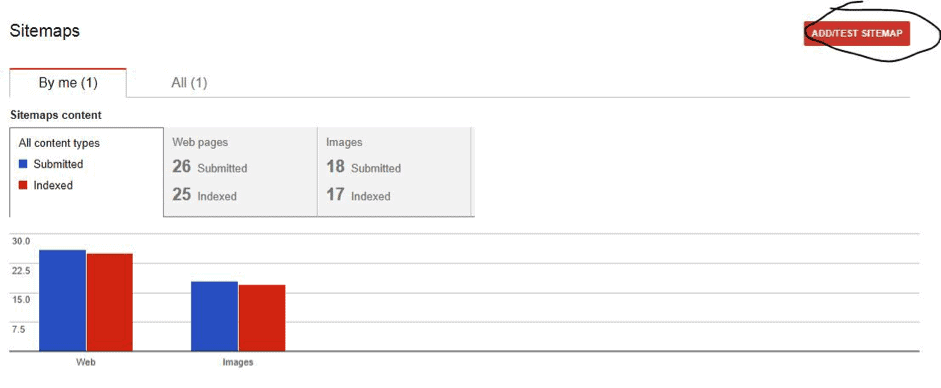
Robots.txt: Every website on the internet should have a Robot.txt file. Most of the search engines look at this file to see what pages should get indexed and what pages shouldn’t.
If you want to restrict specific pages of your website from getting crawled in search engines, then disallow the folder using the robots.txt file. Also, check whether all your pages are allowed to index correctly for all the search engines.
You can check your file by visiting yourwebsite.com/robots.txt
To test your robots.txt file, login to your google webmaster tools and select ‘Robots.txt tester’ under ‘Crawl’ section from the left side menu. Here you can test entering different URLs of your website and see whether all of them are indexed as per your requirements.
Broken links: Broken links are the bad sign for search engines and visitors. There are many types of broken links like 404 errors. Ensure that you do not have any broken links. You can find broken links on your website with Screaming Frog tool.
You can alternately check about broken links on your google search console dashboard or W3C link checker. You also need to check for invalid use of 301 and 302 redirects.
Testing for mobile friendliness: People spend more time on their phones and tablets than on computers.
Especially, when it comes to researching about hospitals or medical information, users are more likely to use their mobile phone or tablets. You have to ensure that your website is mobile friendly to give a good user experience to the end user and also to get leads.
Google has two different algorithms for desktops and mobile devices. If your website is not optimized for mobile users, you will undoubtedly have less organic traffic from them.
You can use the tool created by Google to check the mobile-friendliness of your website. Click here to access the tool and enter your site URL to test it.
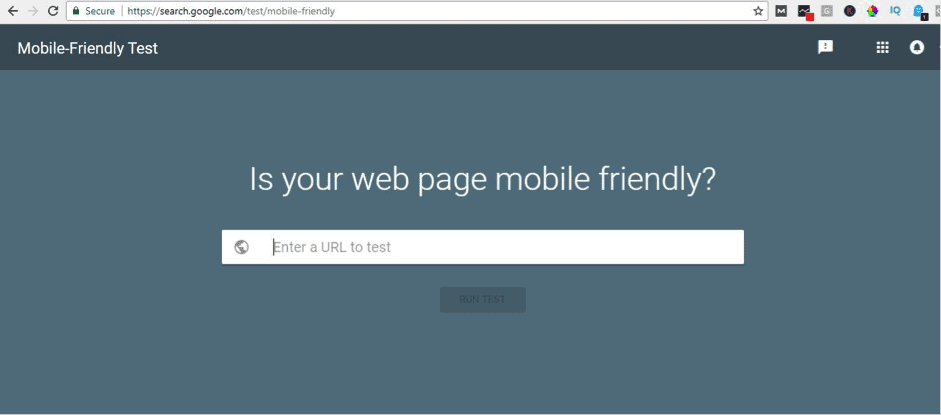
If it is mobile friendly then no need to worry. But if it is not, then it will guide you what all needs to be done to fix the issue.
Website Security: Google is very serious about security and officially announced that HTTPS is a ranking signal. It will give high importance to websites having SSL certificate than those which do not have. Ensure that all your web pages are secured with SSL certificate to get SEO benefit as well as user security.
Conclusion
Congratulations if you have come this far. It’s time for you to put your knowledge to practice. It is recommended to track your website analytics before starting SEO audit using tools like Google analytics. You need to track at least 3-4 weeks of web analytics to understand your organic traffic and conversions. Comment down below if you have any queries regarding SEO audits.










